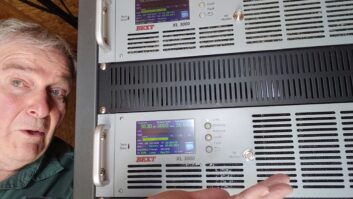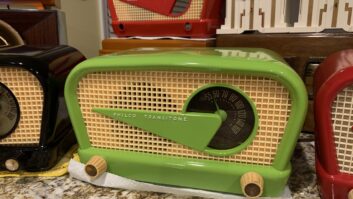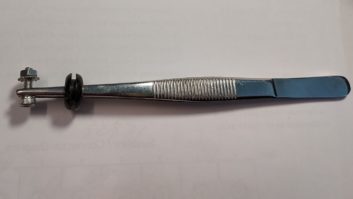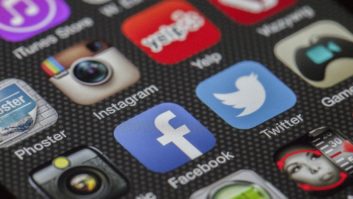
The author is director of broadcast business development for iBiquity Digital Corp.
It used to be that radio stations just had to sound good, fill a listener need in the marketplace and promote themselves to be a success.
We had the car dashboard to ourselves, streaming “radio” was a far-off Star Trek technology and everyone woke up to an alarm clock that was also a radio. We told ourselves that TV didn’t kill radio, 8-tracks didn’t kill radio, cassettes and the Walkman didn’t kill radio, so the Next Big Thing (whatever that might be) also wouldn’t kill radio.
While the steel industry was thrilled if they had a 10-percent profit year, radio stations were often keeping 30 cents to 40 cents out of every dollar they took in.
If radio and its one-to-many capabilities didn’t already exist, it would seem too good to be true. Reach one person or a million for the same cost? Amazing!
Fast forward to 2014, and radio remains the last consumer entertainment source that hasn’t gone fully digital. Taken for granted across all other audio content platforms are dynamic artist and title information and album art, as is digital quality sound. The marketplace has changed, becoming more vibrant, with an explosion of digital choices and options.
And it is changing faster than ever.
HD Radio technology was developed to give stations the ability to reach multiple audiences simultaneously, as well as to create additional “invisible” revenue streams via the ability to provide traffic, weather and other value-added products to enhance the listener experience.
With more than 185 auto models from all major auto manufacturers equipped with factory-installed HD Radio receivers, your listeners are driving new cars off the lot with this 21st century technology already in their dashboards. About 20 million HD Radio-equipped cars are on the road this year; millions more will be there next year.
So how do you cash in and monetize this digital opportunity?
A MATTER OF TRUST
In every local radio station you have a classic example of a highly cost-effective, localized, instantly recognizable brand that can deliver the goods for advertisers.
What’s more, as any program director knows, a well-designed format has a personality all its own, and listeners develop a personal relationship not just with the jocks but also with the station itself. We’re “trusted agents.” The audience grows to trust “its” radio station to find and aggregate music, news, weather and information on concerts and local events.







Pittsburgh-based Steel City Media is a great example of how stations can give equal weight to all their channels and have imaging and distinctive logos for each.
And that trust is extremely valuable to advertisers whether the communications platform is a radio, computer, cell phone, billboard or the stage at a street fair. All of these channels add up to your station’s brand.
Why just sell spots, when you could be selling a complete digital solution for an advertiser? Packaging is what radio excels at; and combining all your digital assets into one buy — on-air, banner ads on your website, on HD Radio receivers and in your app — can help send an important message about your brand:
We’re everywhere your prospective customer is, Mr. or Ms. Advertiser. Our brand can deliver for your brand like no one else, because we can put your message in front of the consumer wherever they may be.
Thinking like a Brand Manager, you start to see that for a radio station to stay successful in the 21st century means going from playing checkers to playing chess. Like it or not, you’re not just managing a station, you’re managing a Brand.
LOGICAL EXTENSION
Carrying the package goods analogy further, adding the HD Radio experience to the mix allows you to present a logical brand extension that will create a cohesive advertising solution for prospective clients.
For example, a rock station that adds a legacy format on its HD2 can allow advertisers to recycle the existing audience for that format, adding that older target demographic to the younger audience already being delivered by their main channel, all without cannibalizing their main channel’s audience.
Package and sell them together, and you have a rationale for a bigger piece of a buy. Add banner ads on your website and scrolling text calls to action and the advertiser’s logo on HD Radio receivers to the mix, and you have a multimedia radio buy that allows an advertiser to utilize your “trusted brand” to sell their brand. To use that package goods analogy again, it’s all about shelf space, whether that shelf is literal or in the listener’s mind.
Or, put your all-news AM on your HD2 or HD3 channel, and instead of suffering tune-out, benefit from tune-over. When listeners leave your music channel, they go to your news station. Why share audience with the competition when you can share among your own stations? Don’t let your P1s become a part of another station’s audience.
Again, taking an example from another industry, if M&M Mars had worried about decreasing its sales, it never would have added peanut, almond or dark chocolate varieties. Instead, they would have lost customers to Hershey’s Kisses. Consumers trust the brand, and the aggregate sales for all the varieties is far larger than for just plain M&Ms alone would have been. Adding additional line extensions did not cannibalize sales for their core brand. This same concept holds true for radio as well.
There are innumerable opportunities here.
MULTICASTING
Country stations can add an “Outlaw Country” format to their HD2 to attract younger listeners and a motorsports channel to their HD3 to deliver more men, creating a package that delivers the country music listener across a broad spectrum.
And religious stations no longer have to choose between spoken-word formats and traditional Christian music programming. Via HD Radio multicasting, they can deliver both, as well as segmenting their music so one channel delivers adults 25–54, while the other delivers adults 18–34. It’s an exciting opportunity to expand the market for your brand.
There are as many new revenue opportunities here as there are creative salespeople.
Whether you’re leasing channels to foreign-language broadcasters looking for a radio voice, selling an individual multicast channel to one client or creating a market-specific new music channel, the possibilities are limited only by your imagination.
So you see, it’s not just about your on-air presence, or your website or even your additional HD Radio channels. And it’s not about just selling spots, Web banner ads or scrolling text messages. It’s about packaging them all together to create a new, improved version of your trusted brand that commands a bigger share of both the total audience and the media buy.
Digital doesn’t just mean what you do on your website.
It means bringing what is still the most efficient, listened-to medium in the world into the 21st century by recognizing that, as general manager, you also have to think like a Brand Manager. And HD Radio Technology allows you to, in effect, add additional line extensions to your brand for far less than the cost of buying additional radio stations (even if they were available).
If we want to help radio retain relevance in the digital age, digital radio is the next logical step in creating additional venues to reach consumers.
As any Brand Manager knows, you have to change with the times.
Rick Greenhut is a 40-year broadcast veteran who has held senior-level jobs, including vice president of new media at Premiere Radio Networks, vice president of business development for Westwood One, regional director of affiliate relations at NBC Radio Networks and division manager at Arbitron.












